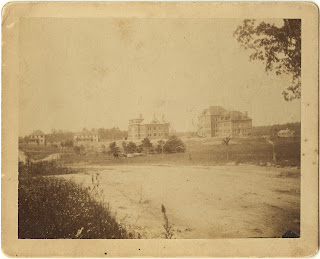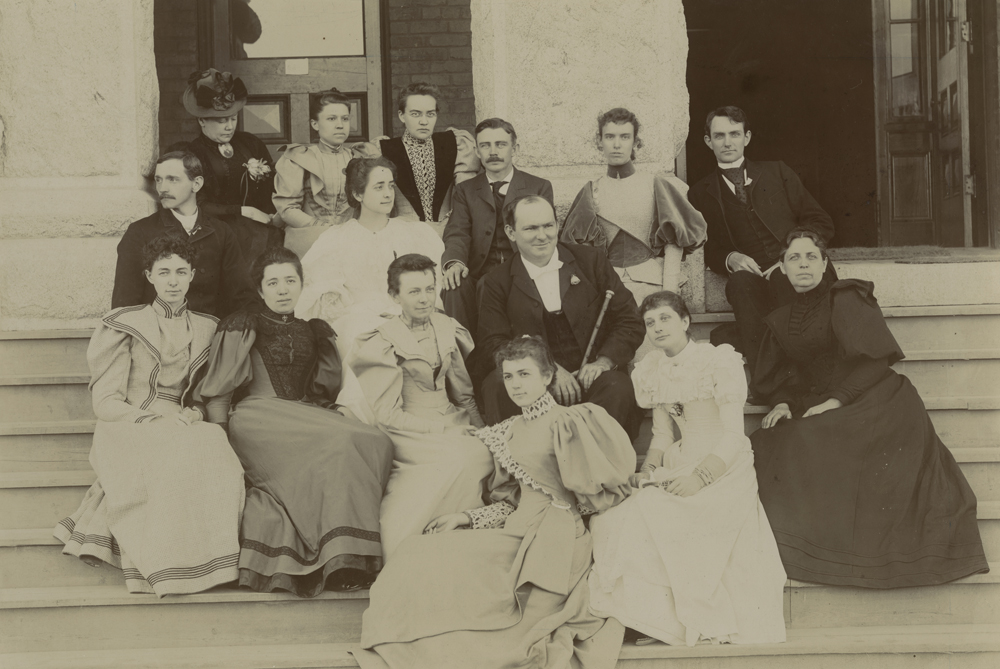On October 5, 1892 – 125 years ago this week – the doors of the State Normal and Industrial School (now UNCG) opened its doors for an initial class of 198 women from across North Carolina. The institution was originally chartered by the State of North Carolina in February 1891, with a mission of training female teachers and instructing them in “drawing, telegraphy, type-writing, stenography, and such other industrial arts as may be suitable to their sex and conducive to their support and usefulness.” Leading the charge in the establishment and development of the school was Charles Duncan McIver, a staunch advocate for public schools, teacher education, and higher education for women. After the state legislature approved funding, McIver was named the first president of the State Normal.
Four North Carolina communities put forth offers to be the home for the new school: Durham, Graham, Thomasville, and Greensboro. Ultimately, Greensboro won due to its relatively central location and the convergence of railroad lines from six directions (see this post for more information on the selection of Greensboro as the school’s site). McIver and other school boosters quickly set about identifying a location in Greensboro where the new institution could be built. Ultimately, in November 1891, the site that was selected was one referred to as the “Pullen Site,” located about a half mile west of Greensboro Female College on Spring Garden Street. This site was also within view, but not directly on, the railroad line. Two Raleigh real estate speculators and philanthropists, Richard Stanhope Pullen and Robert T. Gray, donated the ten acres that would house the school.
After a year spent planning the new school and constructing its facilities, classes began at the State Normal on October 5, 1892 (the date we now celebrate as Founders Day).Courses of study were divided into three departments: normal (teaching), business, and domestic science. The normal, listed as the leading department, included pedagogy classes as well as coursework in English, history, math, science, foreign language, art, music, and physical culture. This department also served as the academic home for McIver. In addition to serving as President of the school, he taught courses in pedagogy, education, and civics – courses that maybe went on a bit longer than anticipated. A memoir written by a staff member noted that “both in class and in chapel, he kept the students after the appointed hour so frequently that faculty members tried to avoid having their own classes scheduled in the following periods.”
The standard course load for these new students included 22 to 27 class meetings per week, divided among six or eight individual courses. Study time was curtailed by the dormitory lights-out rule from 10 pm to 6 am, designed to ensure that students got adequate sleep. Every freshman regardless of major took the same eight courses in algebra, English, general and English history, Latin, physical geography and botany, drawing, vocal music, and physical culture (although domestic science students substituted sewing for drawing).
Founding the State Normal proved to be a milestone in education – and particularly women’s education – in North Carolina and throughout the United States. McIver and the early educators and students at the State Normal set the groundwork for UNCG as it stands today. One hundred twenty-five years after the first classes took place, the legacy remains.
By Erin Lawrimore

